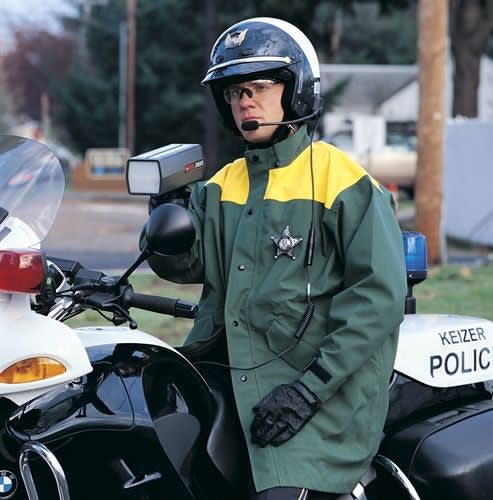Once upon a time, the best materials for raincoats were heavy and rubberized. Now, fortunately, there are a variety of lightweight materials that add all-weather function to quality outerwear. For example, Gore-Tex is a water- and windproof, breathable fabric that's featured in raingear produced by Blauer, Watershed, and other popular makers of police jackets.
Gore-Tex is the best known of the high-tech all-weather materials in today's raingear, but there are other fabrics that offer similar protection and more warmth. For example, Gerber Outerwear lines its coats with Polartec Fleece and Elbeco's outerwear is lined with Thinsulate, a type of thermal insulation that provides warmth but without the unnecessary bulk of heavy coats.
For water repellency and overall comfort, Gerber combines cotton-soft Supplex, Supplex Supreme, Cordura, and Hammock Cloth materials to create durable water-repellent rainwear.
Also, for police gear, fashion and even comfort take a back seat to function. That's why some police jackets feature fabrics like Scotchlight that reflect light back to its source and help to increase an officer's night visibility. It's also why some police raingear such as jackets by Pacific Safety Products have liners constructed of flame-resistant Nomex.
Look for these high-tech fabrics in your outerwear and you're almost guaranteed the best in comfort, durability, and all-weather performance. They're not a cup of strong coffee or a warm fireplace, but they can be the next best thing when dealing with stormy weather.












